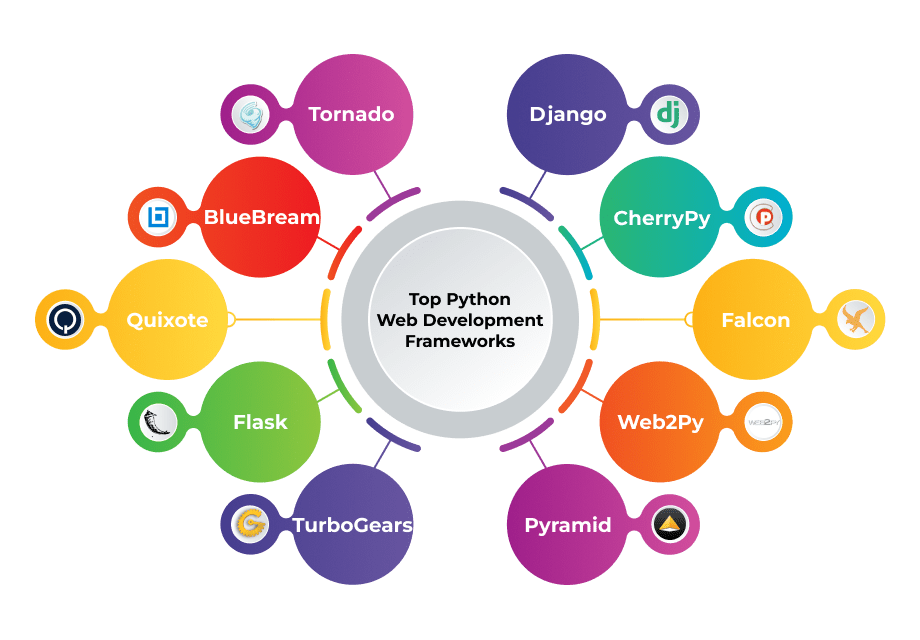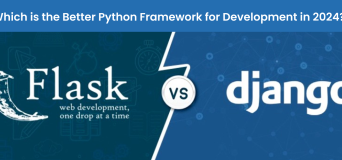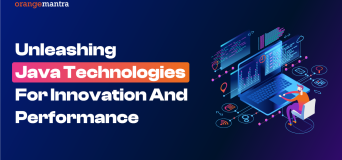Python’s popularity has remained high despite the emergence of dozens of similar development frameworks. It’s mainly because of the programming language’s continual evolution. Besides, Python frameworks provide developers with an efficient framework for building cutting-edge web apps and other solutions. These factors make Python development services a popular choice among diverse kinds of businesses. But what makes Python uniquely consistent and undeniably competitive?
Hire Python developers worldwide and rely on a set of frameworks to build their solutions. These frameworks play critical roles in keeping the Python programming language ahead in the rapidly transforming world of software development. In this blog post, we will discuss some of the most extensive 10 Python development frameworks. Read on to know how these frameworks keep improving Python web programming and related areas.
Table of Contents
Top Python Development Frameworks (2023)
Software engineers rely on a diverse range of Python web development frameworks to build their solutions using the Python coding language. These frameworks share considerable similarities and striking differences. Which one best suits your needs depend heavily on what kind of solutions you need to build.
1- Django
Django is an open-source, full-stack Python web development framework. It enables developers to write intricate code and build sophisticated web applications with less effort. Python developers widely use this framework for building feature-rich applications. It offers an array of libraries written in Python. Features of Django, like superior efficiency, code reusability, and less code, make it outstandingly popular across web developer communities.
The framework imposes an object-relational mapper to map instances to its database. It supports multiple popular databases, including MySQL, SQLite, and Oracle, among others. Besides, its supports also extend to web servers. With a battery of capabilities, Django web development is one of the most widely used categories for Python-based apps.
A few advantages to point out for Django.
- Django assists you in defining the exact URL pattern when you intend to develop the application
- Provides you with a simple yet effective URL scheme.
- It helps you integrate and adopt an authentication system.
Some improvement areas required for Django
- It has limitations for executing smaller kinds of projects.
- Django requires in-depth knowledge to use it in a smart way.
2- CherryPy
CherryPy, like Django, is an open-source Python framework for web programming. The framework is known for its exceptional speed and efficiency. It embeds its own multi-hung server, making the development process more efficient. CherryPy supports all development frameworks compatible with Python.
With CherryPy, you can use an extensive range of technology stacks for Python web development or related projects. Be it optimally accessing data, using templates, or creating advanced features, CherryPy helps you in every aspect of development. It also improves functional areas like monitoring sessions, uploading files, and managing cookies.
A few advantages to point out for CherryPy
- It is a thread-pooling WSGI webserver on which developers rely on
- It has an easy operation that works on different HTTP servers.
- Assists you in integrating the utilities for sessions, authentications, and encoding of static content.
Some improvement areas required for CherryPy
- The framework lacks proper documentation which sometimes gets difficult for people who are in their learning phase.
3- Falcon
Falcon is a minimalist web and probably one of the best Python frameworks for rapidly developing web APIs and app backends. Unlike other Python frameworks, Flacon enables you to build cleaner designs based on HTTP and REST API architectures. With Falcon, you don’t have to load a lot of dependencies for building HTTP APIs.
Flacon provides complete code coverage and is used by leading companies like LinkedIn and OpenStack. Some of the most prominent capabilities of Falcon include an optimized codebase, DRY request processing, speed boost, and idiomatic HTTP error responses, among others.
A few advantages to point out for Falcon
- Falcon is popular among developers for its lightning speed. The design of the framework allows better speed while answering all requests.
- This framework is widely accepted and incorporated by big market giants like LinkedIn and PayPal.
- Falcon works with a wide range of technologies such as WSGI and ASGI.
4- Web2py
Web2py is a cross-platform web application development framework written in Python. It’s open-source and enables developers to dynamic web content, among other capabilities. The framework offers a code editor, a debugger, and an array of other deployment tools. Web2py also features a ticketing system for promptly resolving any potential error.
The most noteworthy features of the Python web programming framework include cross-platform capabilities, seamless functionality without additional installation and configuration, multiple protocol-reading capabilities, the use of the model view controller (MVC) pattern, and many more.
A few advantages to point out for Web2Py
- It allows configuration while building web applications and increases the speed of web development.
- Enables the programmers with a NoSQL database.
- It helps you to maintain the safety of applications by addressing different security concerns.
Some improvement areas required for Web2Py
- System management gets tough while loading all other data models
- Python 3 support is missing.
5- Pyramid
Pyramid is one of the most flexible Python frameworks for web development. It runs on Python 3 and is widely used by experienced Python developers. Using the Pyramid framework, you can build basic web applications with a minimalistic approach. Tech-focused companies like Mozilla, Yelp, and SurveyMonkey use Pyramid.
Among the extensive array of services, the ones that you would love most include the ability to manage both small and large apps, URL mapping, HTML structure validation, comprehensive testing, and data documentation.
A few advantages to point out for Pyramid
- Assists programmers to work neatly on large as well as small applications.
- Helps in testing and extensive data documentation
- It provides you with authentication and authorization
Some improvement areas required for Pyramid
- The construction of complex, time-consuming tools is necessary for the Pyramid framework.
- Only skilled professionals can correctly install the Pyramid’s components.
6- TurboGears
TurboGears is completely a data-driven framework. It was developed with the intention to fill the gap or overcome the loopholes of several other frameworks which are used to build different web and mobile applications. It leverages mobile and backend developers to create applications using minimum setup. Developers can build the website swiftly by using the components like Repoze, SQLAlchemy, Genshi, and WebOb of TurboGears.
A few advantages to point out for TurboGears
- Almost every characteristic performs as a function decorator.
- It provides a multi-base kind of database
- Assists developers to explore command-line utilities
Some improvement areas required for TurboGears
- Some it gets difficult to enlarge the framework if required.
7- Flask
The Flask of Python web framework was invented by modeling the Sinatra Ruby tool. There is one toolkit and one template like Werkzeug WSGI and Jinja2. The Flask framework aims to support the development of a strong web app base.
A few advantages to point out for Flask
- Built-in development is possible with a debugger in the case of Flask.
- It helps programmers to use Jinja2 templating
- In this framework, there is a chance for an integrated support system for unit testing.
Some improvement areas required for Flask
- To use this framework, high efficiency is required for developers. Better attention is needed for detailing to understand the detailing.
8- Quixote
Python programmers can easily develop web-based applications by using the Quixote framework. Quixote aims to increase efficiency in terms of overall performance and flexibility while developing the web application. Quixote framework assists developers in experimenting and learning “real programming language.”
A few advantages to point out for Quixote
- It is simple and flexible to use during the designing web page
- There is a huge library of various functionalities available for analyzing an HTML form.
- In this framework, developers will get the support SCGI protocol
9- BlueBream
BlueBream is one of the best open-source frameworks for developing web applications. This framework serves at its best for large as well as medium-sized tasks. These works are divided into various other user segments. BlueBream offers good experiences to the developers which satisfies them by meeting their key requirements for persistent and durable programming.
A few advantages to point out for BlueBream
- BlueBream is required for functional testing.
- In this framework, a language complaint is required for developing templates with XHTML.
- It is also used as a tool for generating forms automatically.
Some improvement areas required for BlueBream
- It requires in-depth learning if the developers are gaining knowledge about Python for the first time.
- It is sometimes difficult in terms of its utility, specifically for simple and moderate tasks.
10- Tornado
The Tornado framework is kind of unconventional compared to others. Tornado helps developers to solve the issue of C10k. This means the framework is able to handle almost nearly 10k connections with its available configuration. Because of its ability makes the best tools for building different applications to satisfy business needs.
A few advantages to point out for Tornado
An authorization mechanism is required for this framework, it enables developers with third-party authentication.
- It showcases real-time services, and better quality that never blocks the development process.
- This framework allows you in fetching high-quality results.
- It assists with web templates and user authentication.
Concluding Thoughts
Python framework is incredibly easy to learn. And that’s perhaps the single most striking factor that makes the language so popular among beginners and experienced developers alike. With Python, developers can integrate an extensive range of features and functionalities with unmatched speed and seamlessness. Besides, Python’s evolution per the changing market needs keeps it from getting behind in the race.
At OrangeMantra, our web application developers love to use Python for making advanced web solutions. Being a trusted Python web development company, we proactively upgrade our methods and frameworks.
FAQs
1- What are the benefits of using Python for web application development?
Being one of the simplest and easy-to-learn high-level programming languages, Python is incredibly popular among developers. It offers unmatched extensibility, scalability, and versatility. A user-friendly data structure minimizes the length of all the codes which are used to develop the application. An object-oriented design along with strong integration capabilities and its unit testing framework gives it the benefits of speed and productivity.
2- Why is Python preferred over Java?
Multiple factors are in play when it comes to preferring Python over Java. Coding in Python is much faster than in Java. Python is more dynamic, easy to learn, and more evolved. Besides, the platform is compatible with emerging technologies like AI and machine learning.
3- Is Python used for web development?
Python is widely used for developing a diverse range of scalable web applications. The programming language is preferred for complex applications that are not possible to develop using other languages like .NET and PHP.
4- How much does it cost to build a Python web application?
The costs of developing a Python web application depend on the specific requirements of the clients. Other factors that influence it include the scale of the project, the size of the team to be hired, the technology stacks used, and the engagement model chosen by the client.





